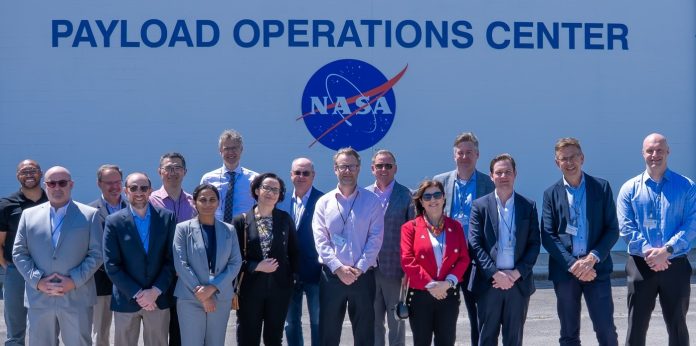THE WOODLANDS, Texas — The Marshall Space Flight Center is the site of a first-of-its-kind, affordable, large-scale liquid hydrogen storage tank concept.
CB&I and a Shell Oil consortium announced the project that will enable international import and export applications.

“Our collaboration with this world-class project team will help provide a path to low-cost, large-scale liquid hydrogen storage,” said Mark Butts, President & CEO of CB&I. “We are proud to leverage our six decades of experience with cryogenic insulation and storage to advance innovative solutions for the energy transition market.”
The project, which began in 2021 and is supported by the U.S. Department of Energy, developed a novel non-vacuum tank design concept for large-scale (up to 100,000 cubic meters) storage of LH2 that is anticipated to provide a substantial cost advantage over conventional vacuum insulated tanks. The concept is being demonstrated through the construction, startup and testing of a small-scale LH2 demonstration tank at Marshall.
“At Shell, we believe in the power of collaboration to advance technology and scale up innovative solutions,” said Theo Bodewes, General Manager, Hydrogen Technology. “With the invaluable support from the DOE, this project demonstrates how experts from industry, academia, and government can solve complex technology challenges. This novel liquid hydrogen technology promises to be more competitive, reducing costs and accelerating large-scale storage commercialization.”
The demonstration tank will significantly increase the MSFC hydrogen test facility’s LH2 storage capacity and be used to characterize the behavior of materials under cryogenic conditions, mimicking normal fill and empty cycles and testing non-vacuum insulation materials.
In addition to an estimated six-month test period included in the project scope, a Space Act Agreement among the partner organizations provides for MSFC’s use of the tank over a five-year period, during which CB&I and Shell will continue to test new insulation technologies under non-vacuum conditions.
“We take pride in participating in this industry collaboration to advance commercial liquid hydrogen storage applications,” said James Fesmire, GenH2 Chief Architect. “This initiative has allowed us to develop testing capabilities for thermal insulation systems and produce essential data for unlocking the global potential of liquid hydrogen.”
“This first-of-its-kind concept is a great example of unleashing American energy innovation – a key priority for the Department of Energy,” said Dr. Sunita Satyapal, director of DOE’s Hydrogen and Fuel Cell Technologies Office. “Through collaborative expertise from industry, academic, and government agencies, this work can contribute to America’s leadership in growing global markets for hydrogen and hydrogen-based fuels and offer greater opportunities for American energy operators to store, deploy, and export liquid hydrogen.”
CB&I built the first LH2 sphere for NASA and NASA contractors in the 1960s, with a capacity of 170 cubic meters, and has expanded that threshold over the last sixty years by almost 30-fold to 5,000 cubic meters with a tank completed in 2022 at Kennedy Space Center for the Artemis program. CB&I has completed over 130 LH2 storage vessels since the 1960s.
The company and NASA have had a partnership of more than 60 years, with CB&I contributing to NASA projects, including supporting the Apollo and Gemini space missions.
Don’t miss out! Subscribe to our email newsletter to have all our smart stories delivered to your inbox.



